Expedition to the ancestors. And we finished our campaign on the Pacific Ocean
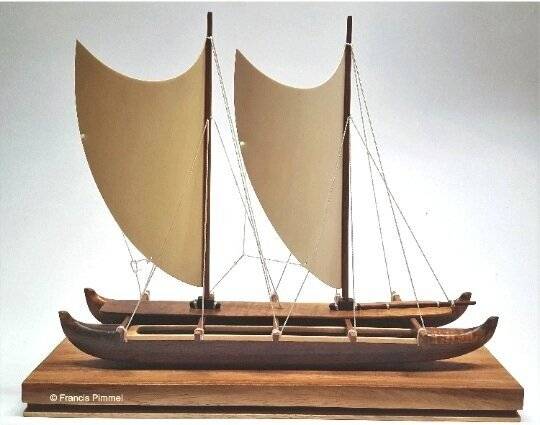
Model of an authentic Hawaiian double-hull canoe. Work by Francis Pimmel
(Atea - spirit of space),
On the sides are paths for Atea,
And behind there is a path for the wind.
O Tanya, you who reign over the vastness,
Bewitch them, O Tanya!
Song of the Polynesian sailors
Migrants and migrations. So we've been delving into this for quite some time now. history ancient migrants and migrations and found out that our ancestors at all times were... big restless people. As soon as they took off, on foot, in chariots drawn by horses, on carts drawn by oxen, and simply on horseback, they went somewhere far away from their native places, to where there was still plenty of uninhabited space.
If these lands were uninhabited, then it was a gift of fate. And if not, then they had to fight for new places to settle and pastures for livestock. People walked through deserts, between giant glaciers, just to... find the promised land, where there are no other people and you can live to your heart's content, without fear of any strangers. So people are xenophobic by nature? It may very well be! In any case, it was not for nothing that they came up with the saying that “hell is others”!
But they walked and walked and... came to the seashore. There was no further way, but this did not stop people. They built boats and rafts and moved further along the water, hoping that blessed land would certainly await them ahead.
And so today let’s get acquainted with how exactly such a huge expanse of water as the Pacific Ocean was populated. Let's take a break from land migrations and look at the most impressive development of the island territory of its vast expanses in the history of people.
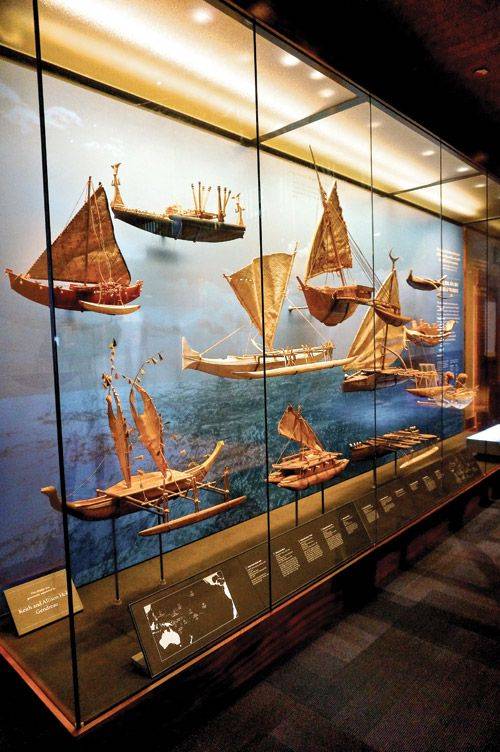
One of the Bishop Museum stands with models of Polynesian ships
Brave New World in the Southeast
And it so happened that 50 years ago, when Tasmania, Australia and New Guinea formed another whole, people began to penetrate this Southern continent for the first time. Moreover, in order to move here from Southeast Asia, they needed to make at least one long sea crossing. And it is obvious that they did it. Otherwise people wouldn't be here!
Well, having moved to this new continent for them, they encountered an amazing world, stretching from the tropics in the north to the quite temperate climate of the south. Some of the edible plants they encountered were similar to Asian ones, but the animals amazed their imagination. In addition to the species that have survived to this day, now extinct giant creatures also lived here: kangaroos three meters tall, herbivores the size of hippopotamuses, marsupial lions and huge flightless birds.
Australia in the Pleistocene
Despite the wealth of land resources, the settlers' main attention was drawn to rivers and the sea coast with an abundance of fish and edible invertebrates. So the first settlements appeared in these places. Moreover, today most of them are inaccessible to archaeologists, since with rising sea levels they ended up in a shelf zone, flooded by the sea. The concentration of finds in south-eastern Australia is the result of increased attention paid to this region by archaeologists.

Map: Australia in the Pleistocene
The Pleistocene inhabitants of Australia used ocher for complex rock art and laid the foundation for the rich and still thriving Aboriginal art. The first rough axes belong to the Australian tradition of core-shaped (nucleus-shaped) tools. It changed little for 40 years and dominated the entire continent, although there were regional features reflecting connections with New Guinea and Southeast Asia.
Aboriginal life
About 5000 years ago, sea levels rose to modern levels, and although the Aborigines still lived near the coast, they also developed an interest in inland resources. During this era, finely crafted tools made from small flint flakes, which were attached to a wooden base, appeared on the continent.
The political, economic and religious development of the Aborigines formed about 500 tribal territories with a population of over 750 people by the time the first European colony appeared at the end of the 000th century. Although the main occupations remained gathering and hunting (real agriculture never developed), the Australians adapted perfectly to environmental conditions.
In the deserts, small groups of nomads used land covering thousands of square miles, and in more resource-rich regions there were permanent settlements. The natives caught fish using traps, contributed to the restoration of edible grasses and root crops, and used controlled fires, which stimulated the growth of new vegetation that attracted game birds.
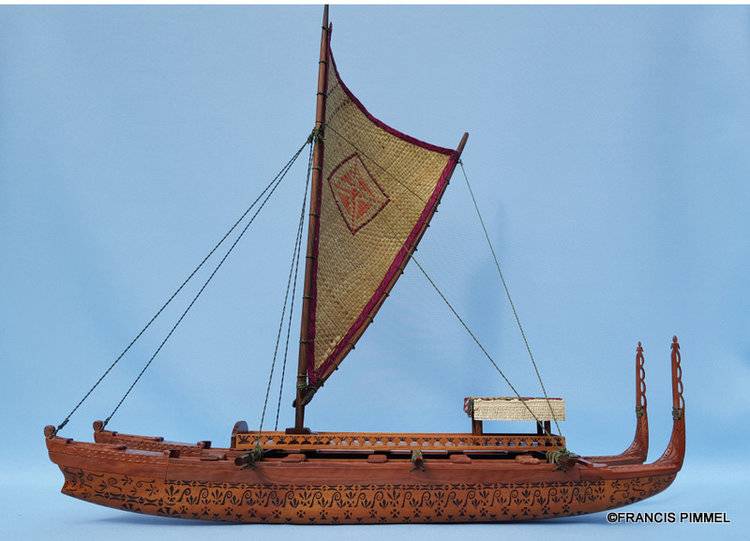
Catamaran from the Cook Islands. Work by Francis Pimmel
New Guinea
This island was inhabited at the same time as Australia. In the north of the island, archaeologists excavated a settlement at least 40 years old (the time it was buried by volcanic ash), and people appeared on New Ireland about 000 years ago.
Finds in the mountains in the north-west of New Guinea indicate its dense population already in the 6000th millennium BC. e. About XNUMX years ago, major changes occurred in the economy associated with the use of Asian cultivated plants and domestic animals. At the same time, the drainage of the swamps for crops began.
But with all this, it turned out that gathering and hunting still complement local agriculture, although... spaceships have been plowing the expanses of the Universe for a long time.
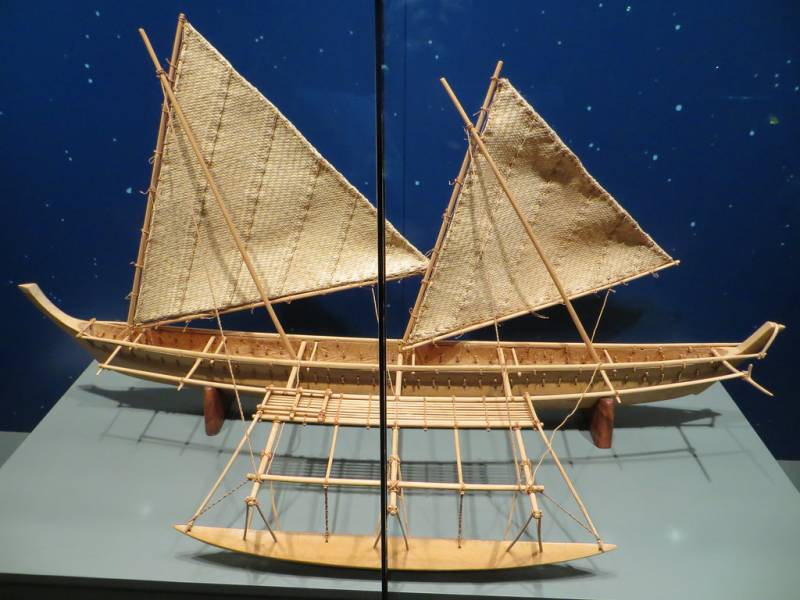
Model of a wakashiu sailing canoe with a balance beam from Kapingamaran
Farther to the East!
The settlement of island Melanesia (east of New Guinea) occurred mainly in the 1300nd–XNUMXst millennia BC. e. groups of sailors who carried livestock and seed with them. These Austronesians, who had characteristic Lapita-style pottery (possibly originating in the Moluccas), reached by XNUMX BC. e. Fiji in eastern Melanesia, and soon moved to Eastern Polynesia through the archipelagos of Tonga and Samoa.
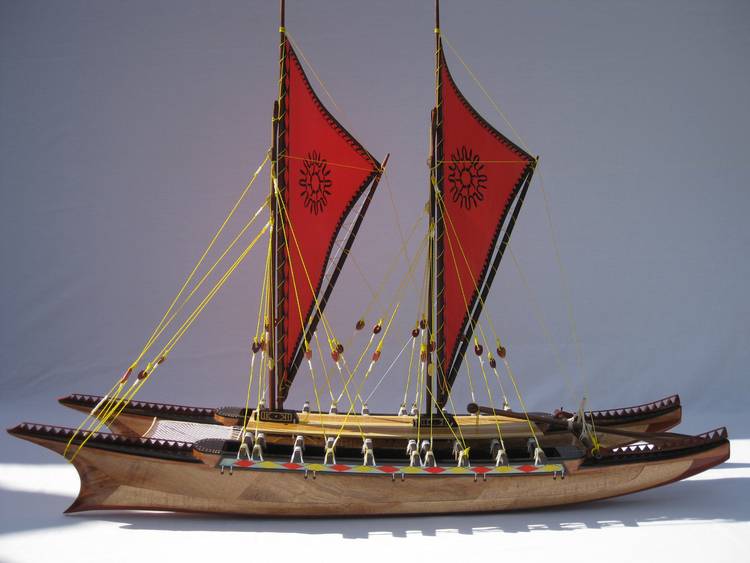
Samoan double-hulled canoe. Work by Francis Pimmel
It was on these two archipelagos (especially the last) that the typically Melanesian material culture gradually transformed into Polynesian over more than 1000 years of geographic isolation.
Around 150 BC BC, when Lapita pottery disappeared throughout insular Melanesia and Western Polynesia, the Samoans reached the Marquesas Islands in their boats. After a pause, around 400 AD. BC, the Austronesians arrived in Hawaii, as well as on Easter Island, where they subsequently created a very distinctive and impressive culture.
The remaining major archipelagos of Polynesia, including New Zealand, were settled mainly from Tonga and Samoa or from the Society Islands and Marquesas Islands in 750–1300. These “microcosms” lost in the ocean gave rise to many more or less original cultures that were practically destroyed by European colonization in the XNUMXth–XNUMXth centuries.
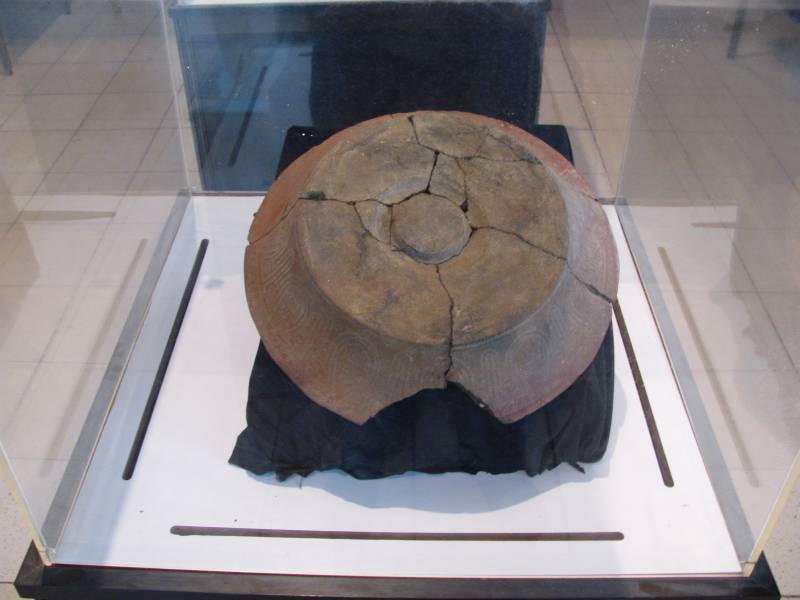
Lapita pottery from Vanuatu, Port Vila Museum
Cool New Zealand
The cool climate, large size, and unique flora and fauna of New Zealand created a number of specific problems for the first Polynesian settlers. Most of the plants and animals they brought were unable to adapt to the new conditions. Dogs have taken root well, and the crops (almost exclusively on Severny Island) are taro, yams and sweet potatoes.
But here lived a real delicacy - giant flightless birds, of which moa (dinornis) are best known. This is how the first colonists (Maori) became peasant hunters, nomadic in accordance with the changing seasons. Permanent settlements remained mainly along the coast, where people were engaged in fishing.
In the following centuries, the coastal population began to increase rapidly, but on Yuzhny Island the resources of the interior regions were also intensively used.
Hunting and burning of forests gradually changed the nature of the islands, which in the XII-XIV centuries. led to severe deforestation of the territory and the almost complete extinction of large flightless birds. At the same time, the classical Maori culture came to replace the Polynesian ancestral culture.
Military affairs began to develop especially rapidly, and specific fortified settlements – “pa” – began to grow everywhere. Early European explorers, including Cook, estimated the native population of both islands at about 150. Hunting continued to play an important role in their economy, and the southern half of South Island did not know agriculture due to the cool climate.
European colonization quickly led to the Maori Wars, and British victory pushed the unique indigenous culture to the margins of New Zealand history.
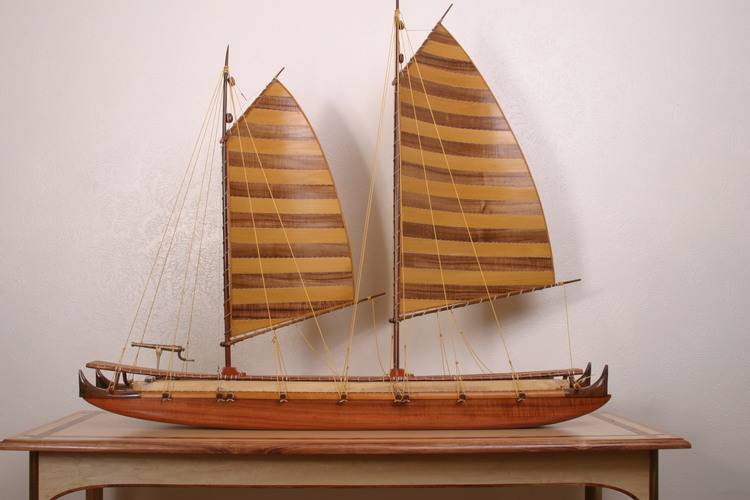
Legend has it that more than 120 ships of this type were built by King Kamehameha I around 1796 to conquer Kauai. Francis Pimmel model
From island to island!
Most of the large archipelagos of Melanesia and Western Polynesia were inhabited in the last two millennia by Lapita pottery speakers.
During 1 years of isolation in Tonga and Samoa, a distinctive material culture developed, which in about 000 penetrated from there to Eastern Polynesia. In 400–400 colonists from these archipelagos, loading double-hulled and single-hulled boats with a balance beam with seed and livestock, reached almost all the islands of the Polynesian Triangle.
The development of all areas of our planet suitable for human life has been completed!
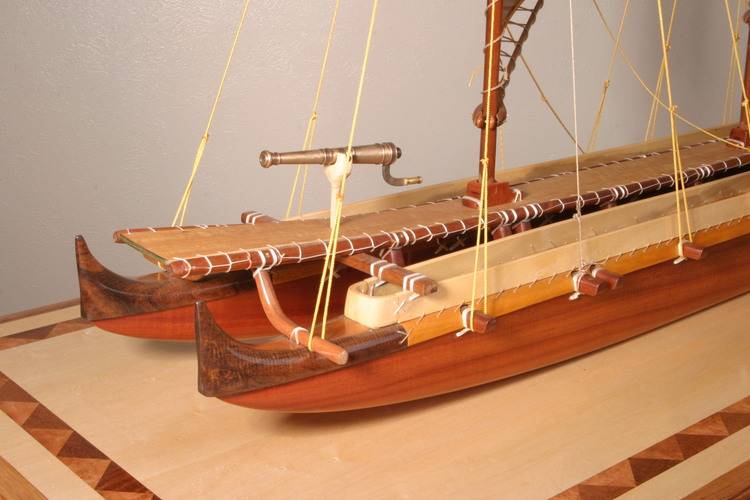
Interestingly, some of these ships even had... cannons, which, along with gunpowder and cannonballs, were received from the Europeans in exchange for sandalwood! Francis Pimmel model
PS
The author and administration of the site express their gratitude to Francis Pimmel for providing photographs of his models of Polynesian ships.
To be continued ...
Information